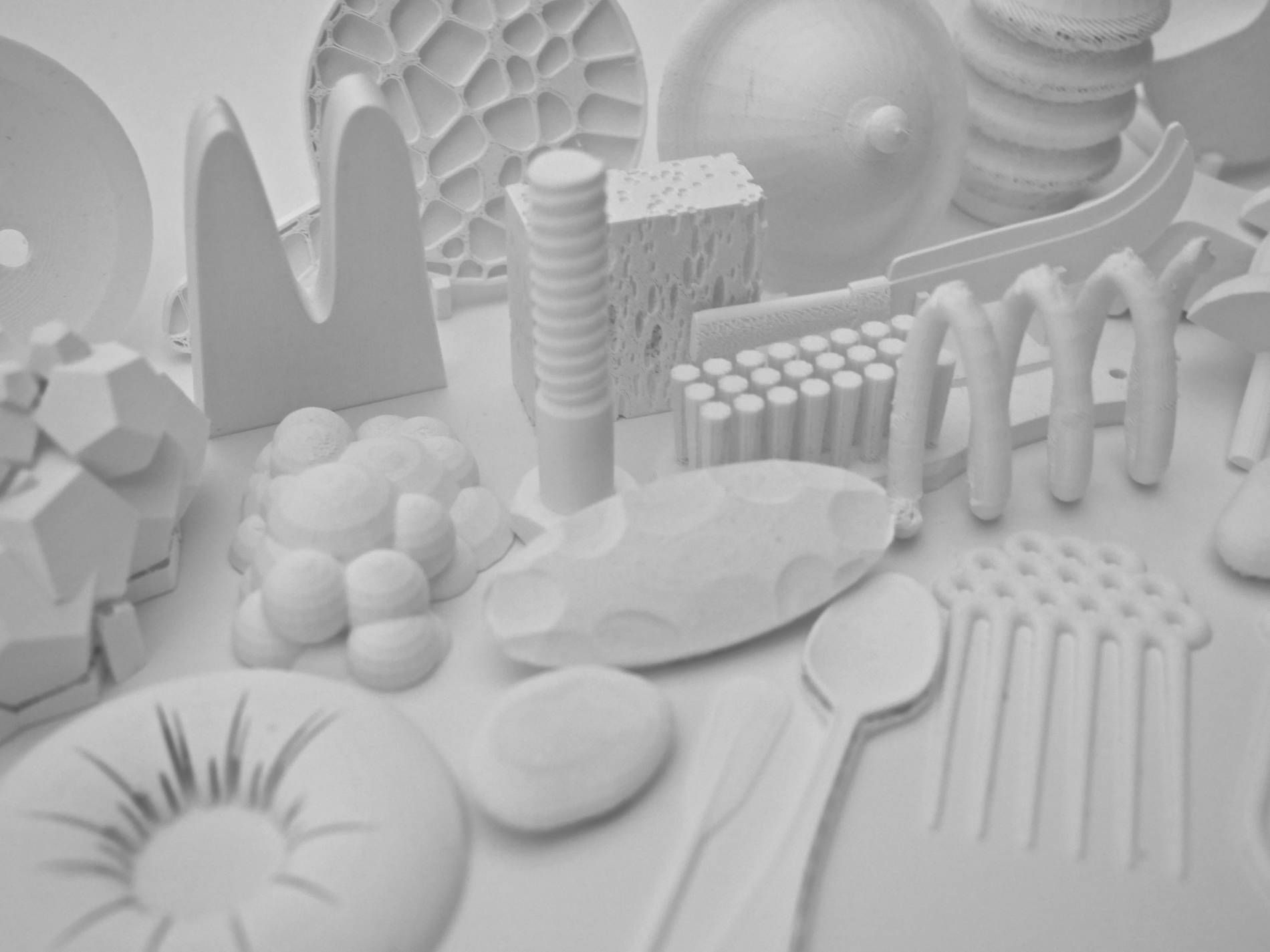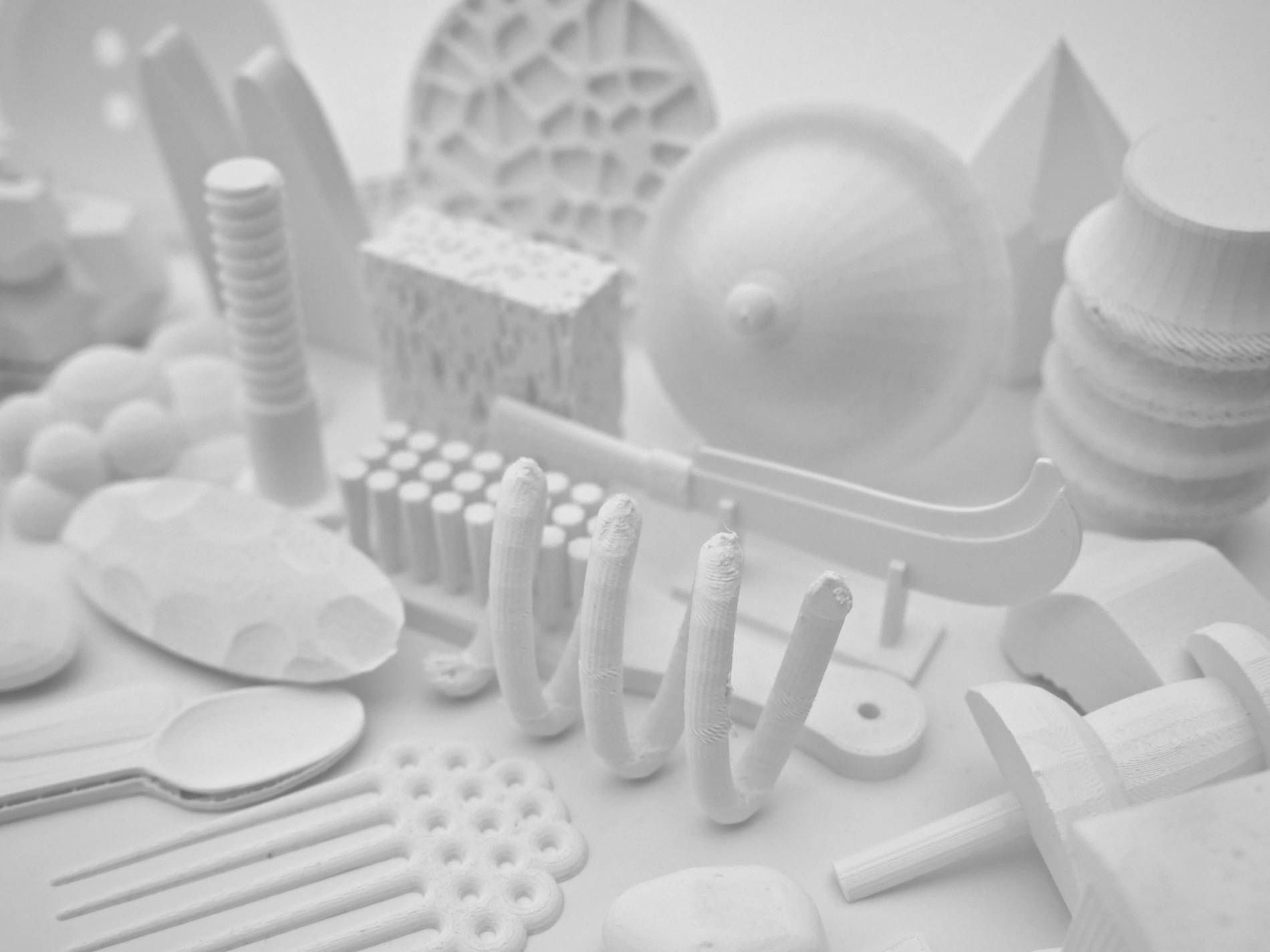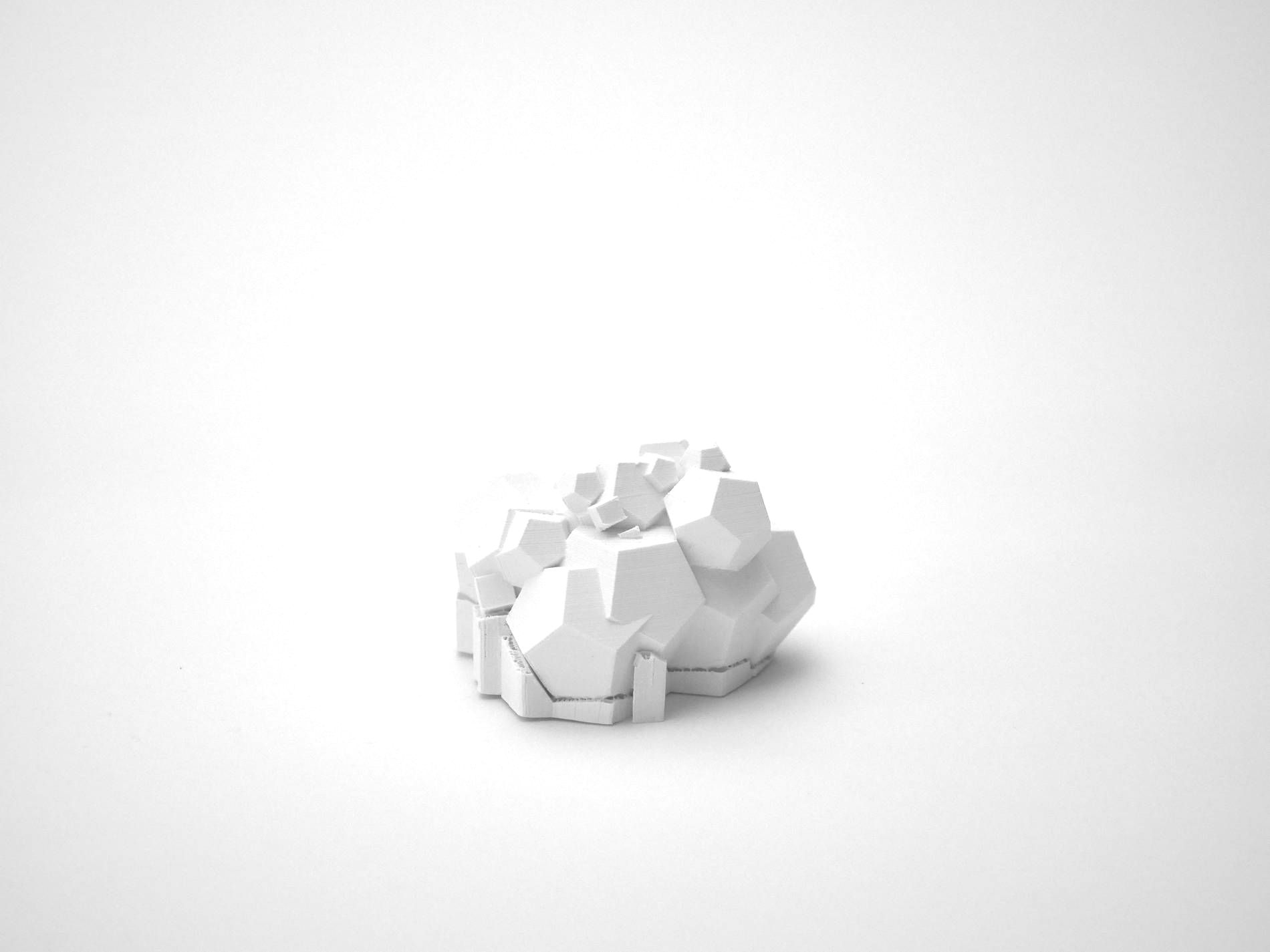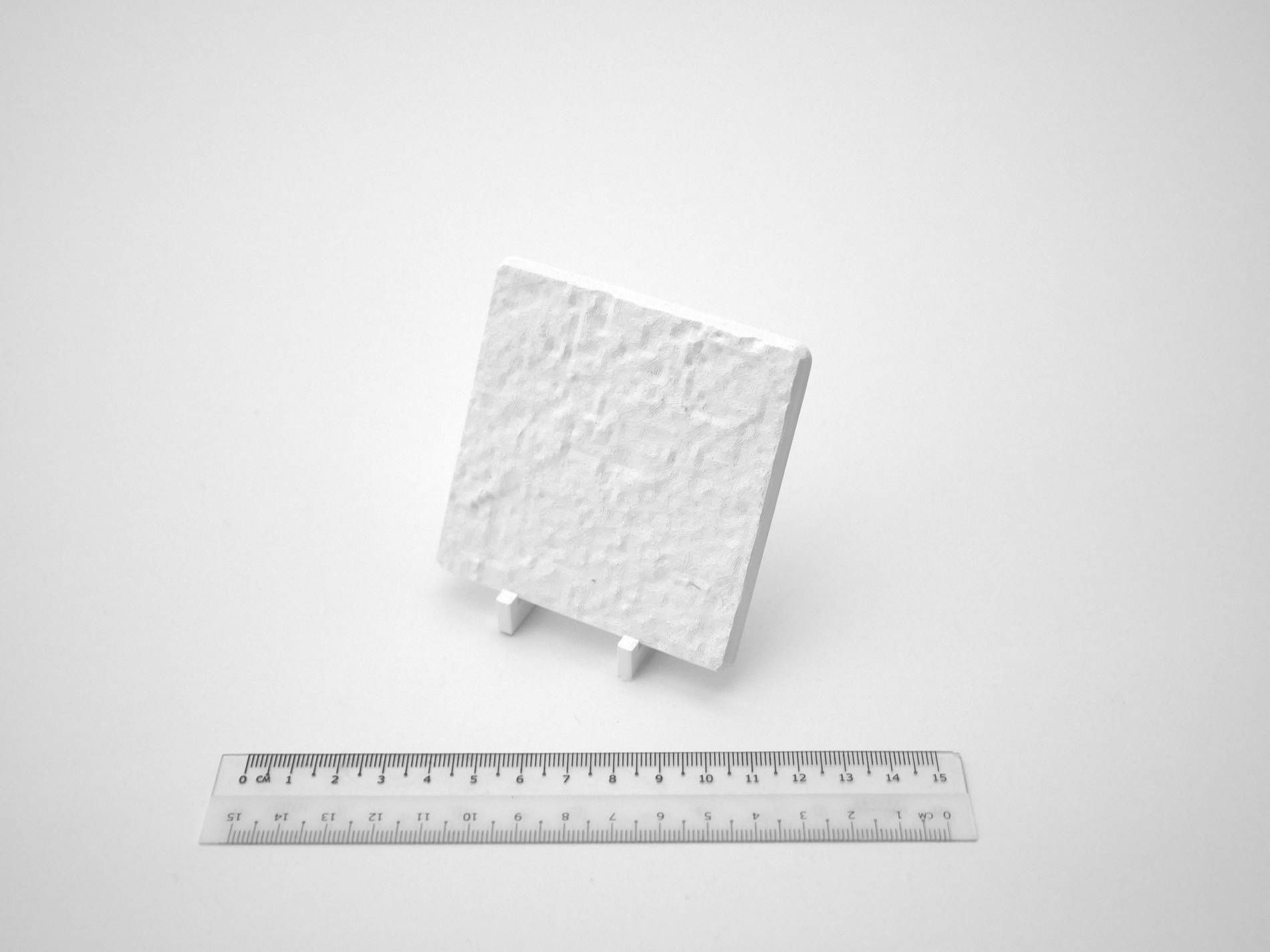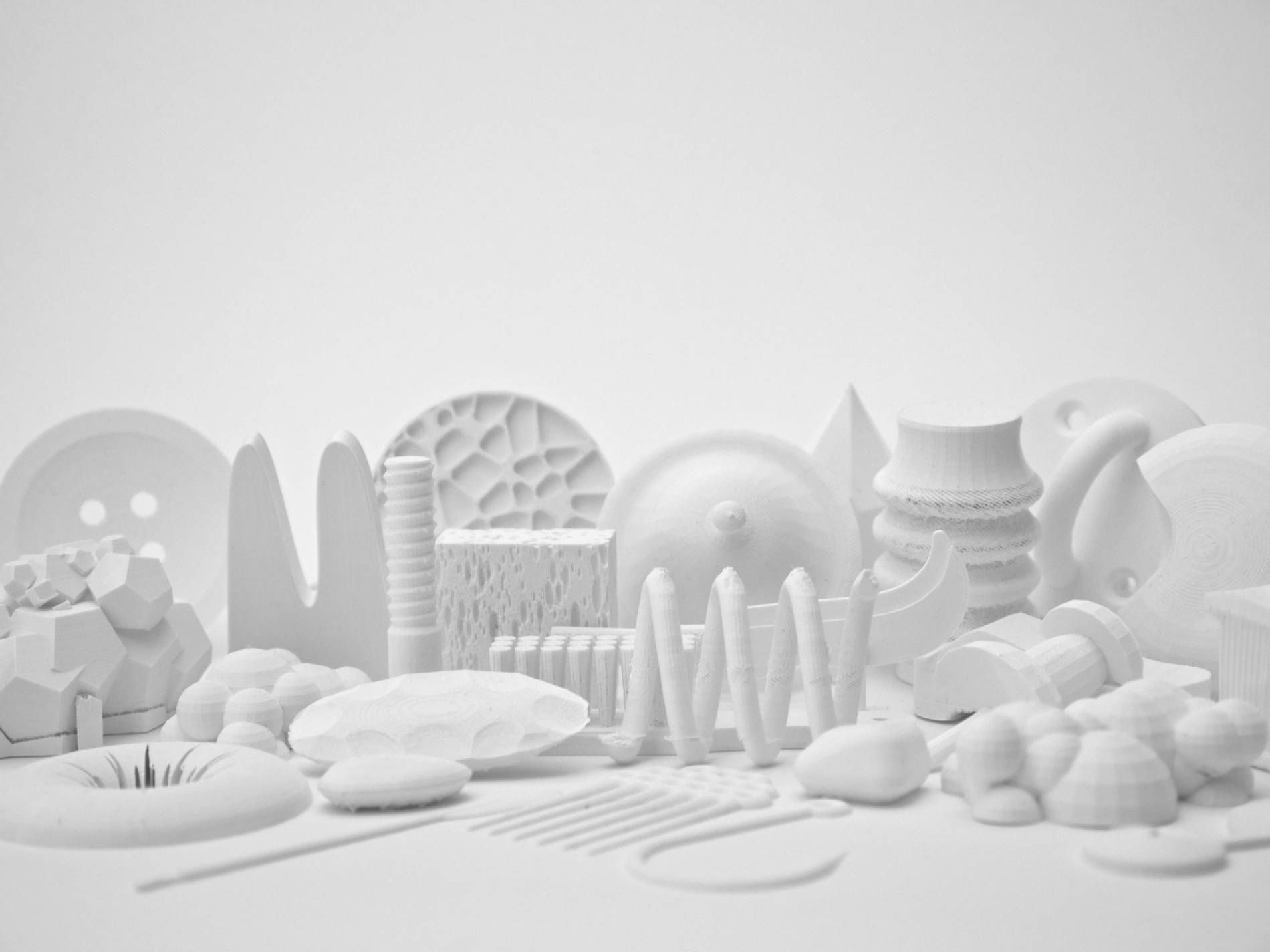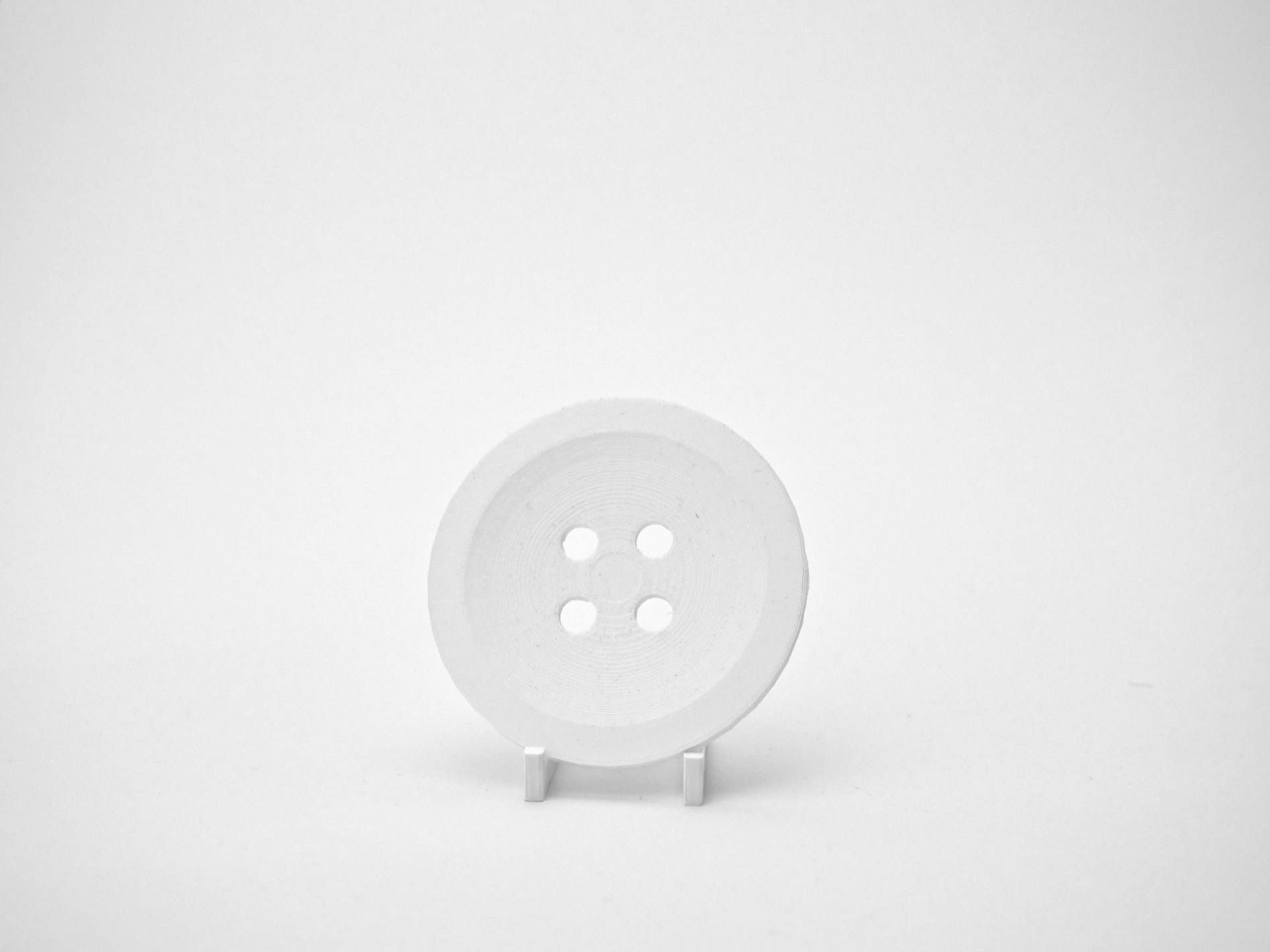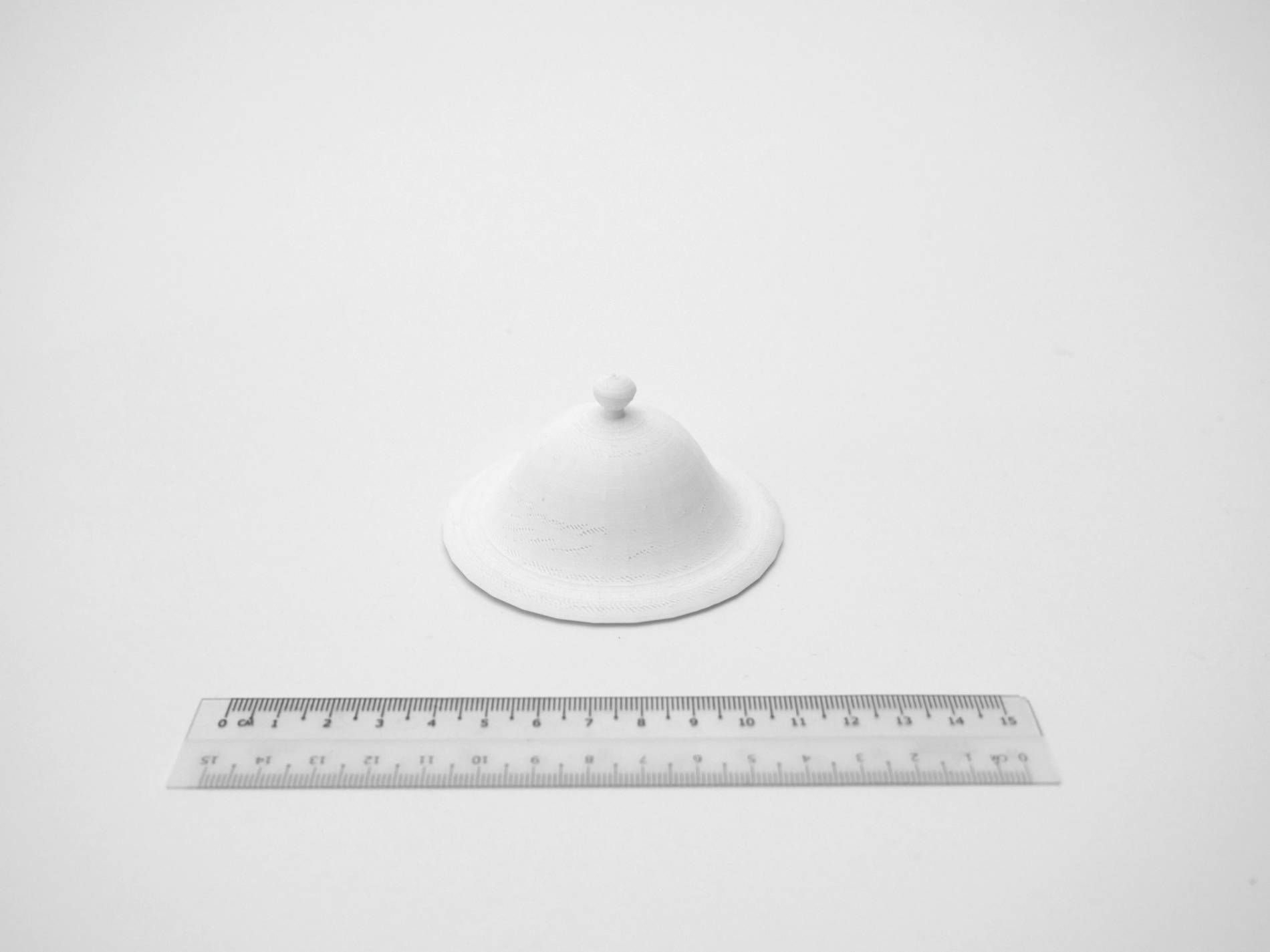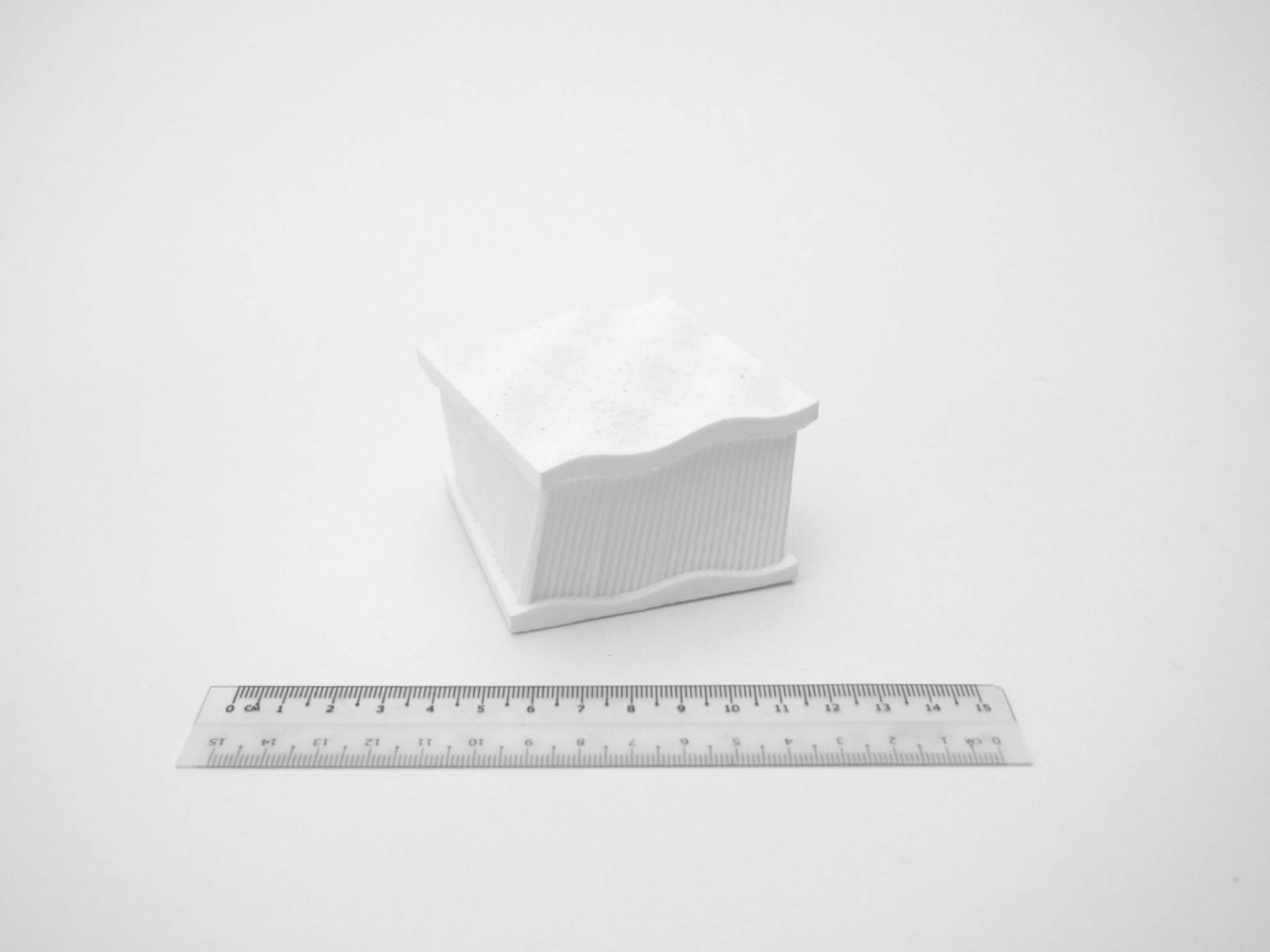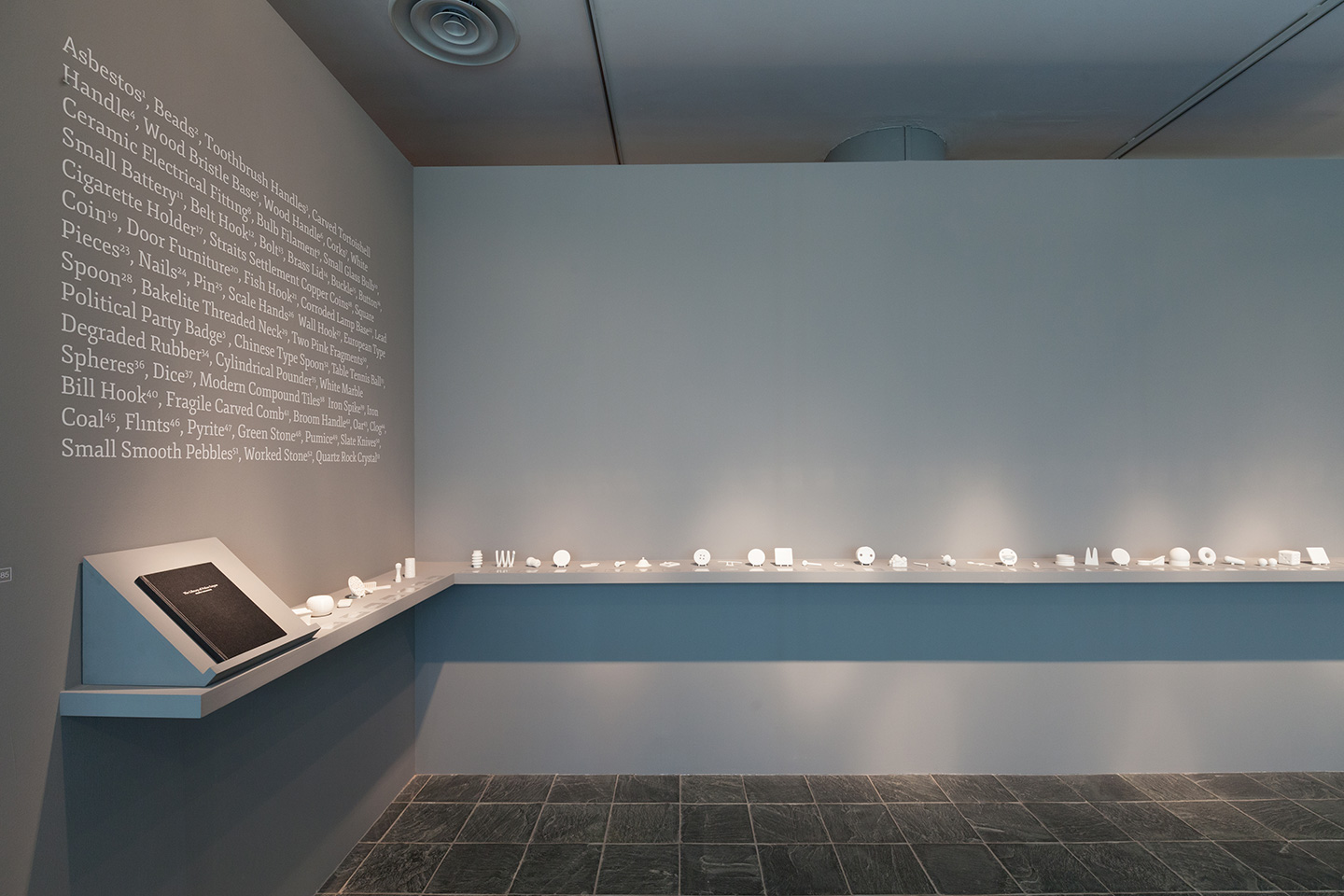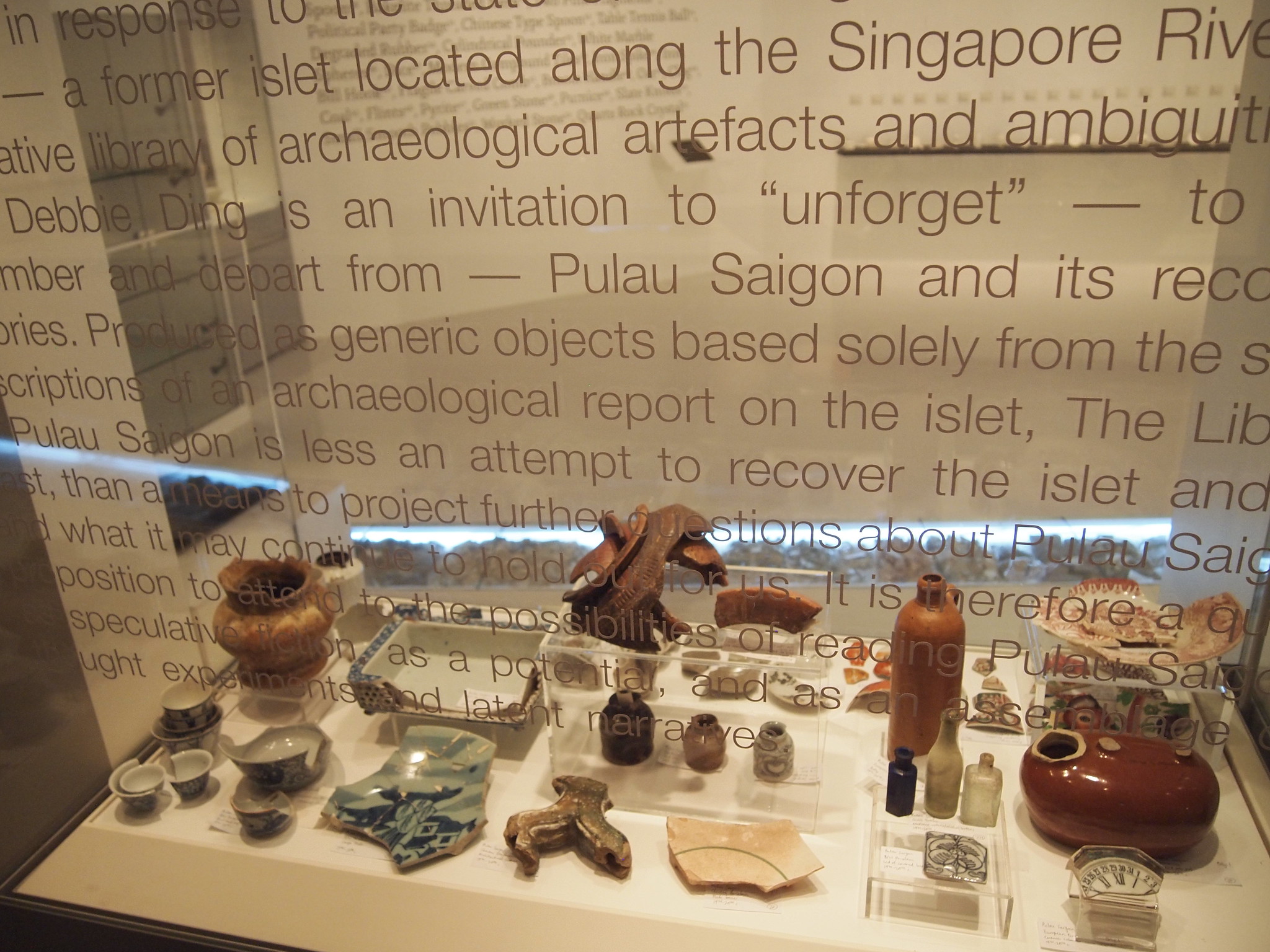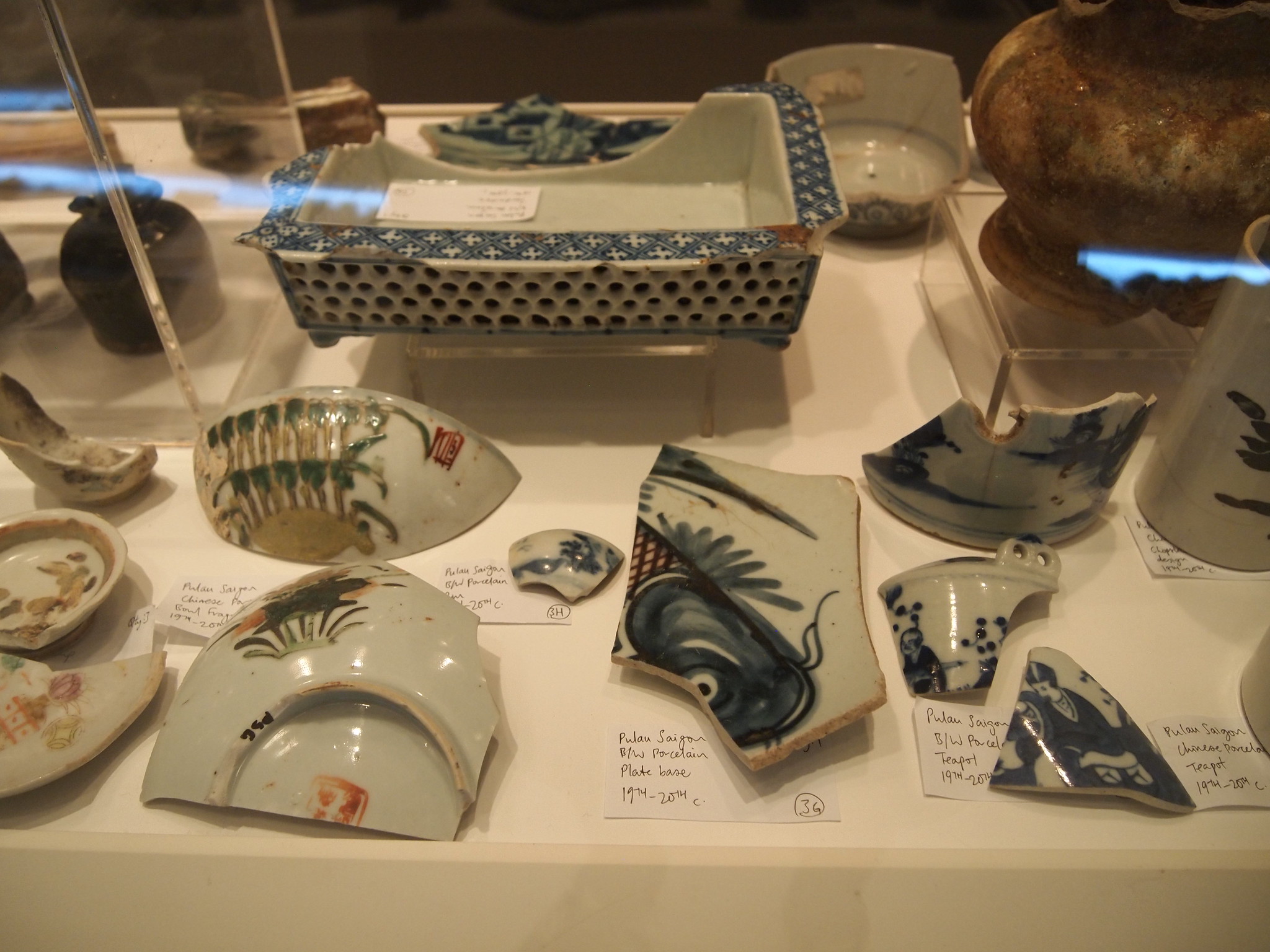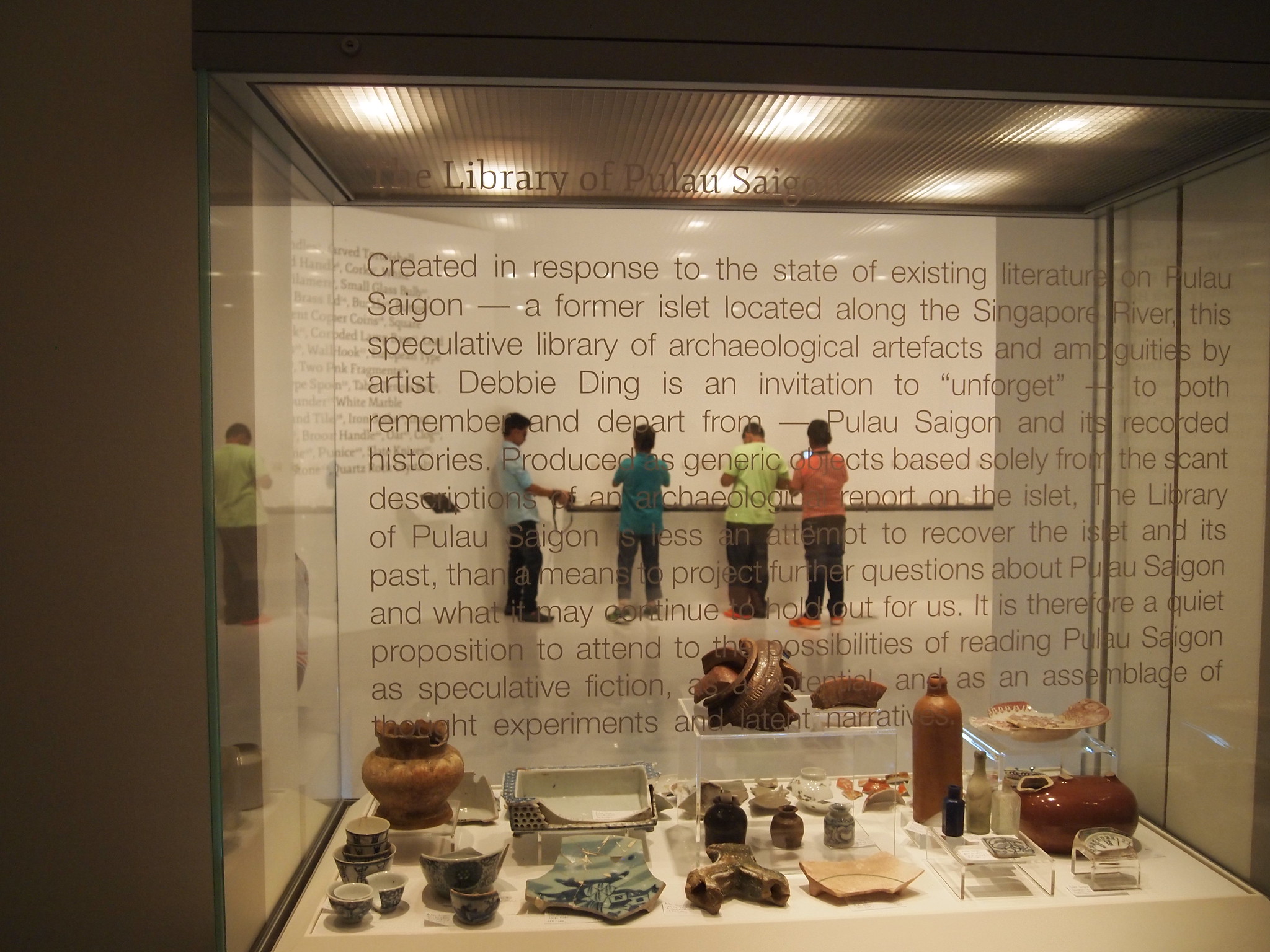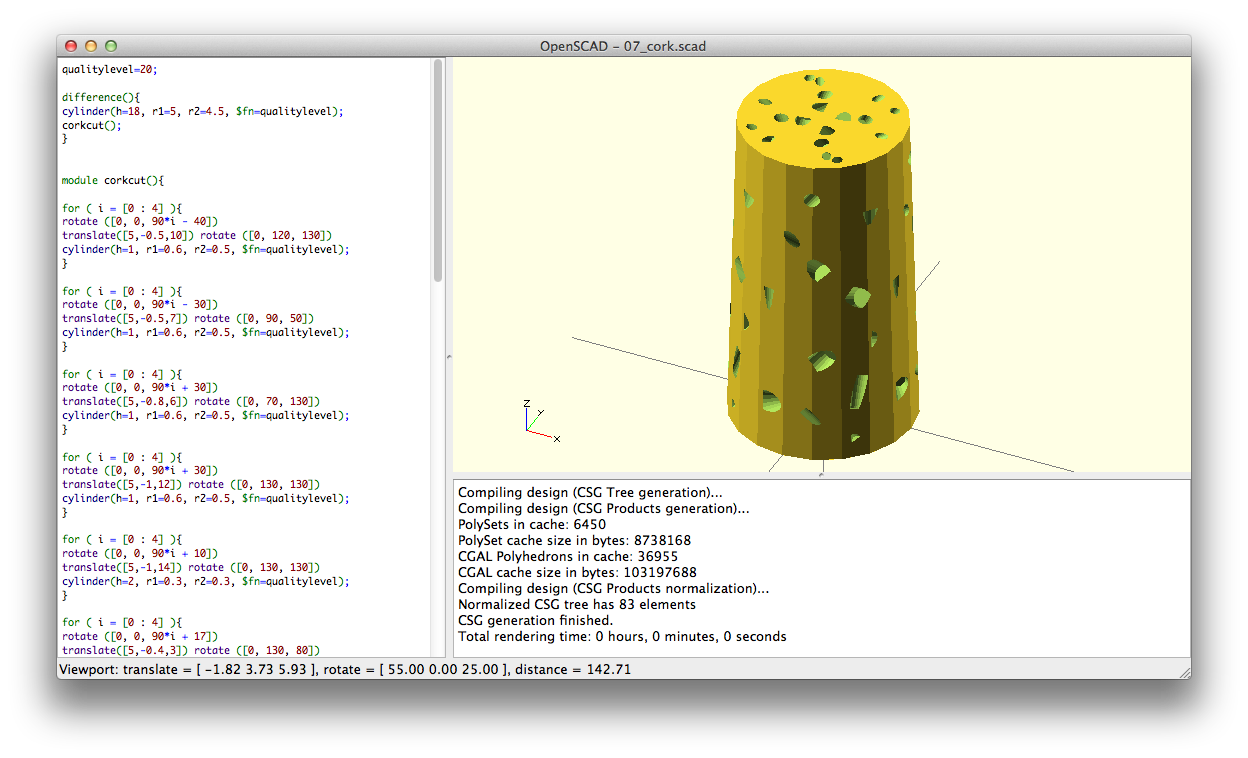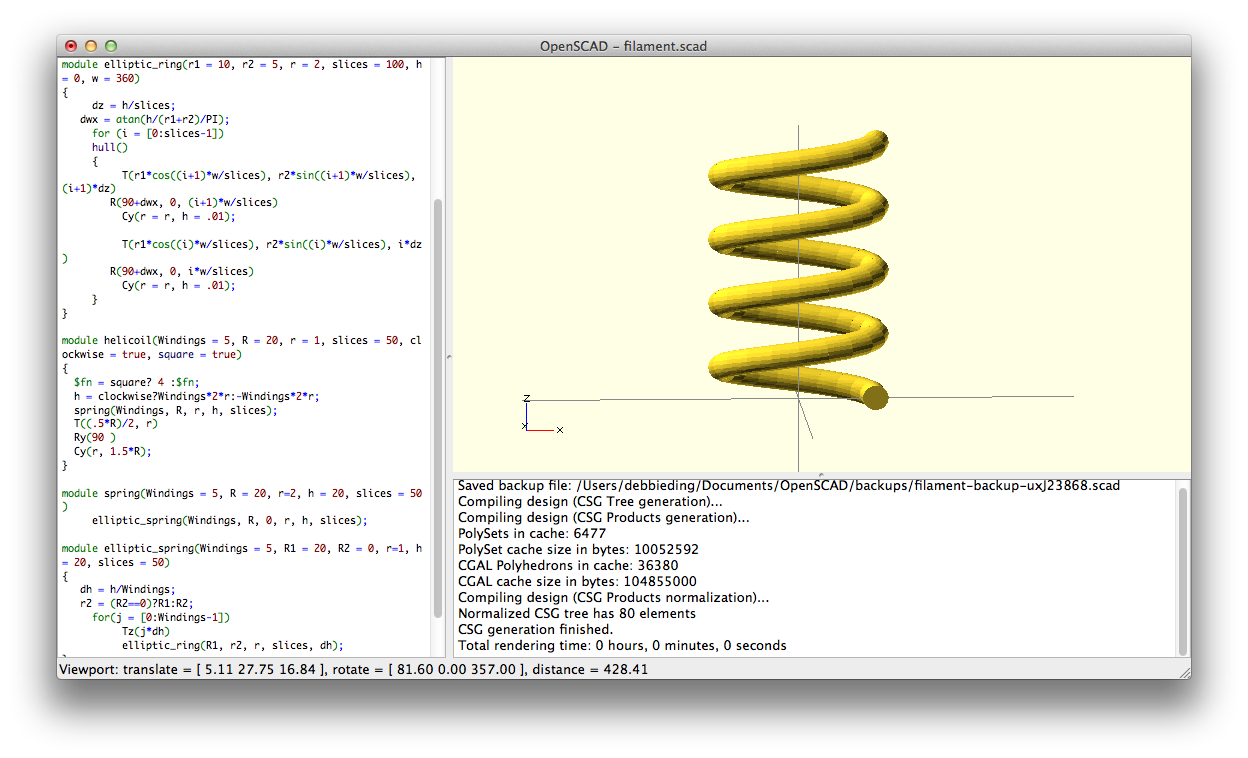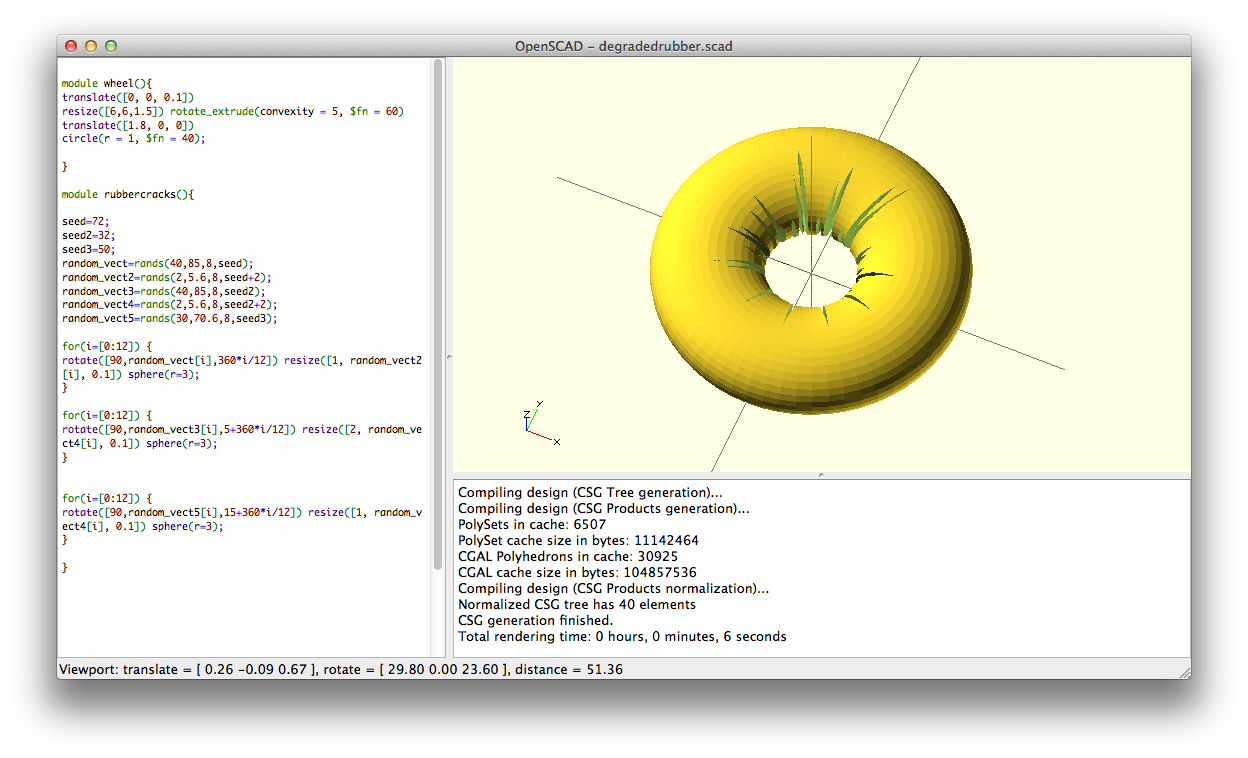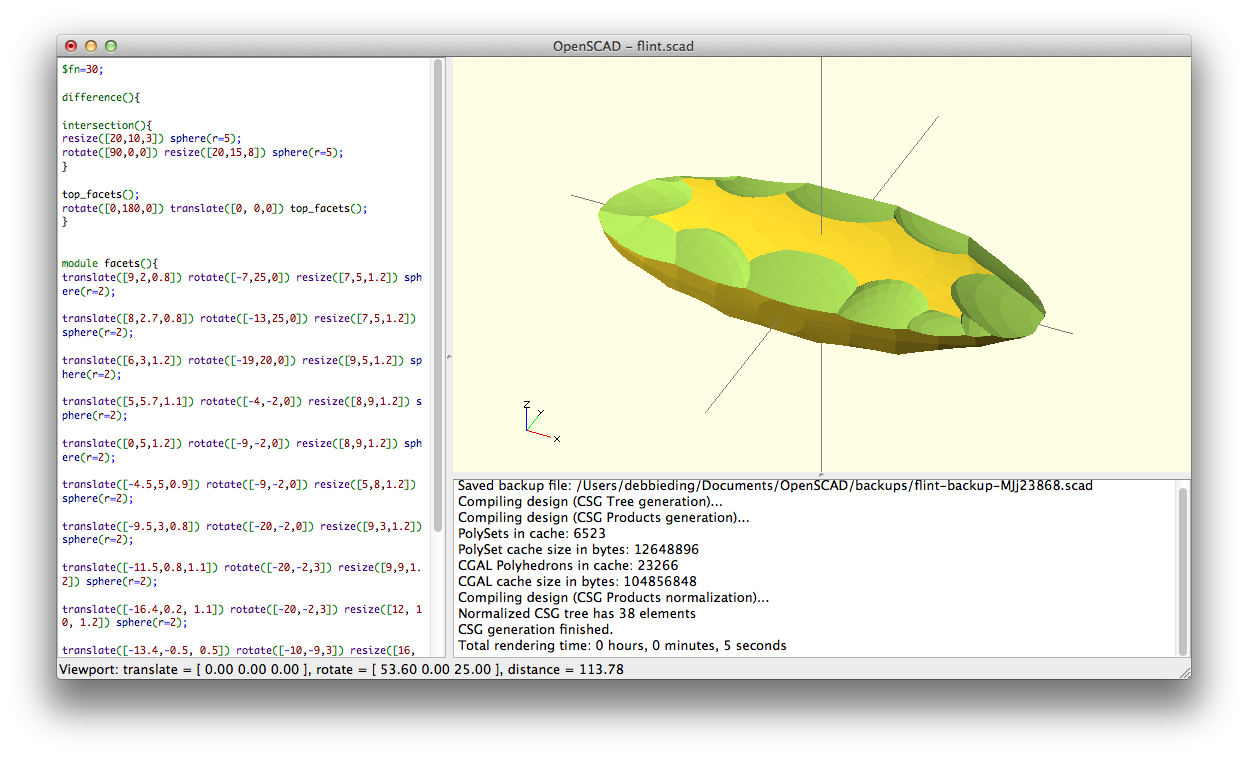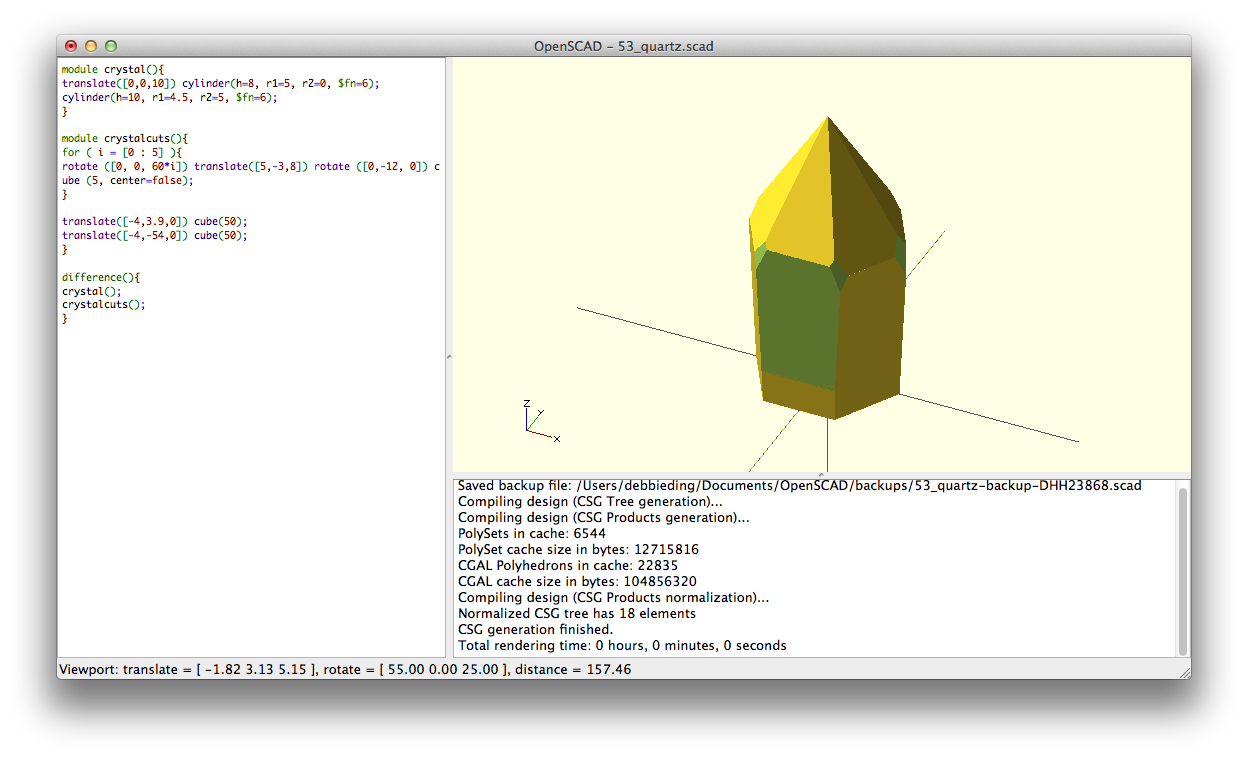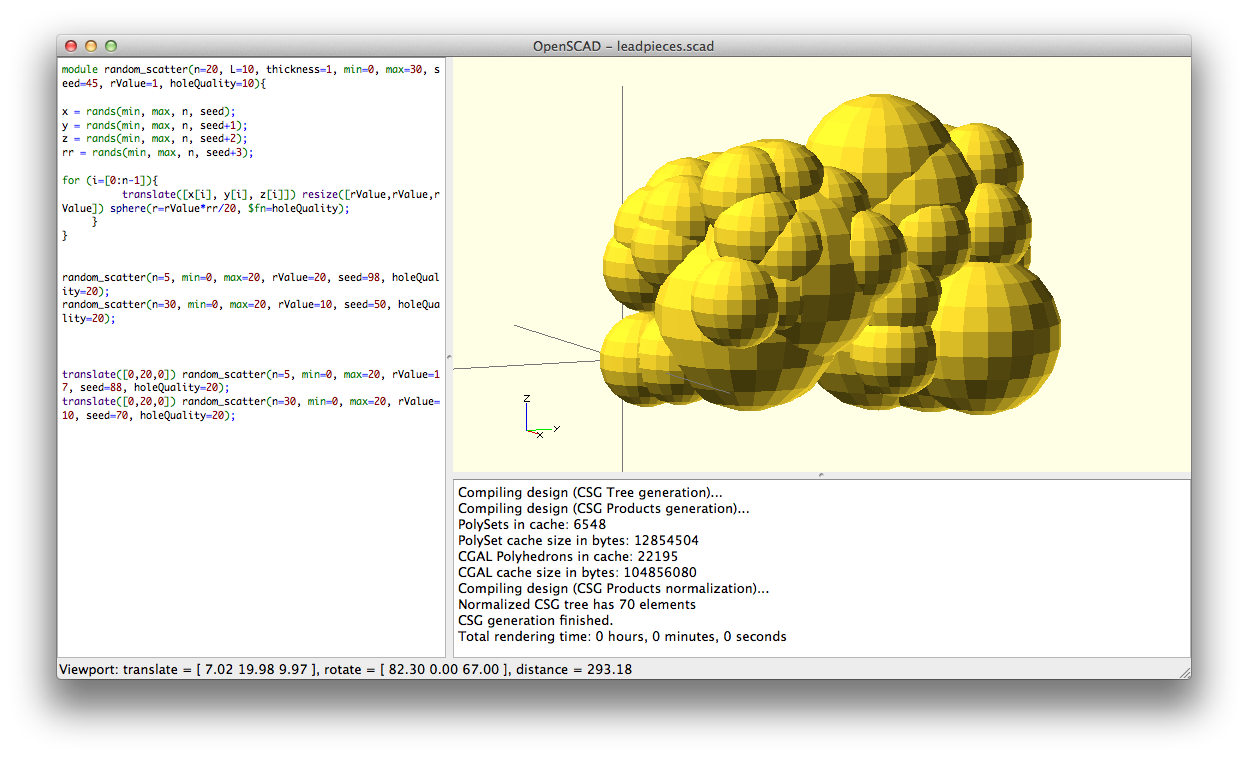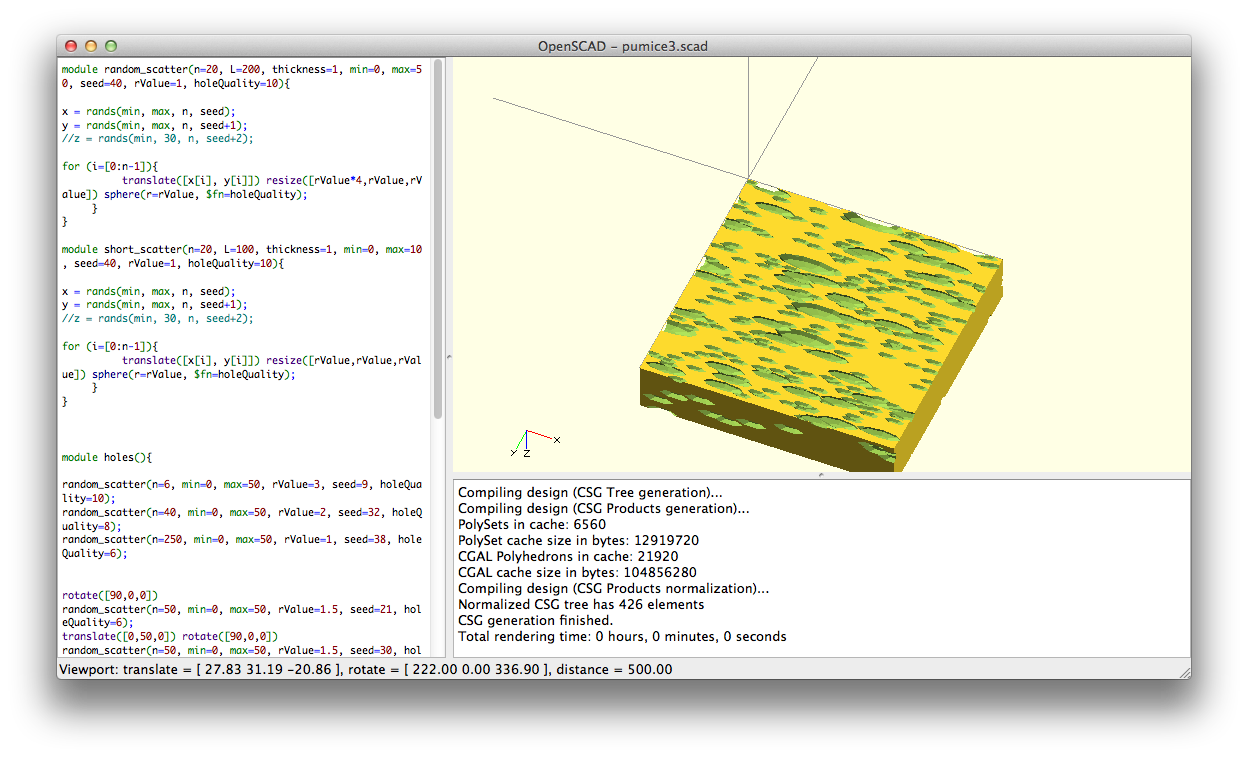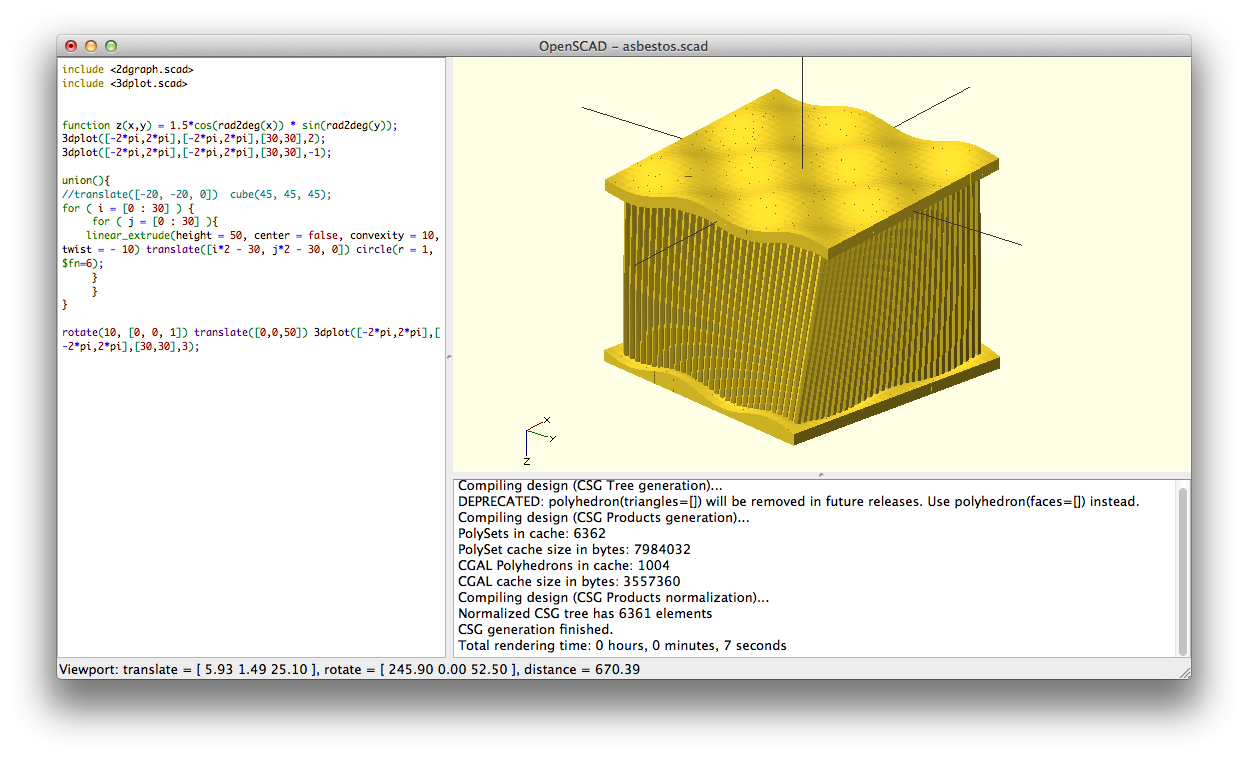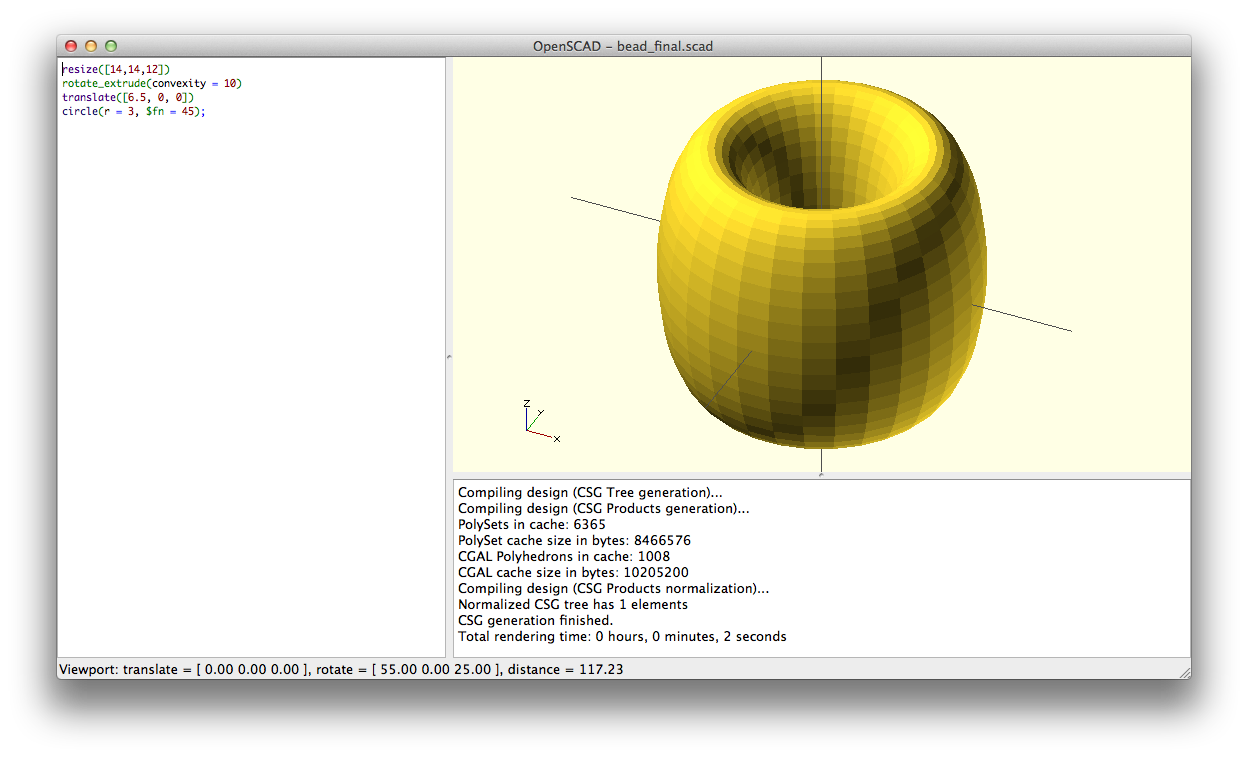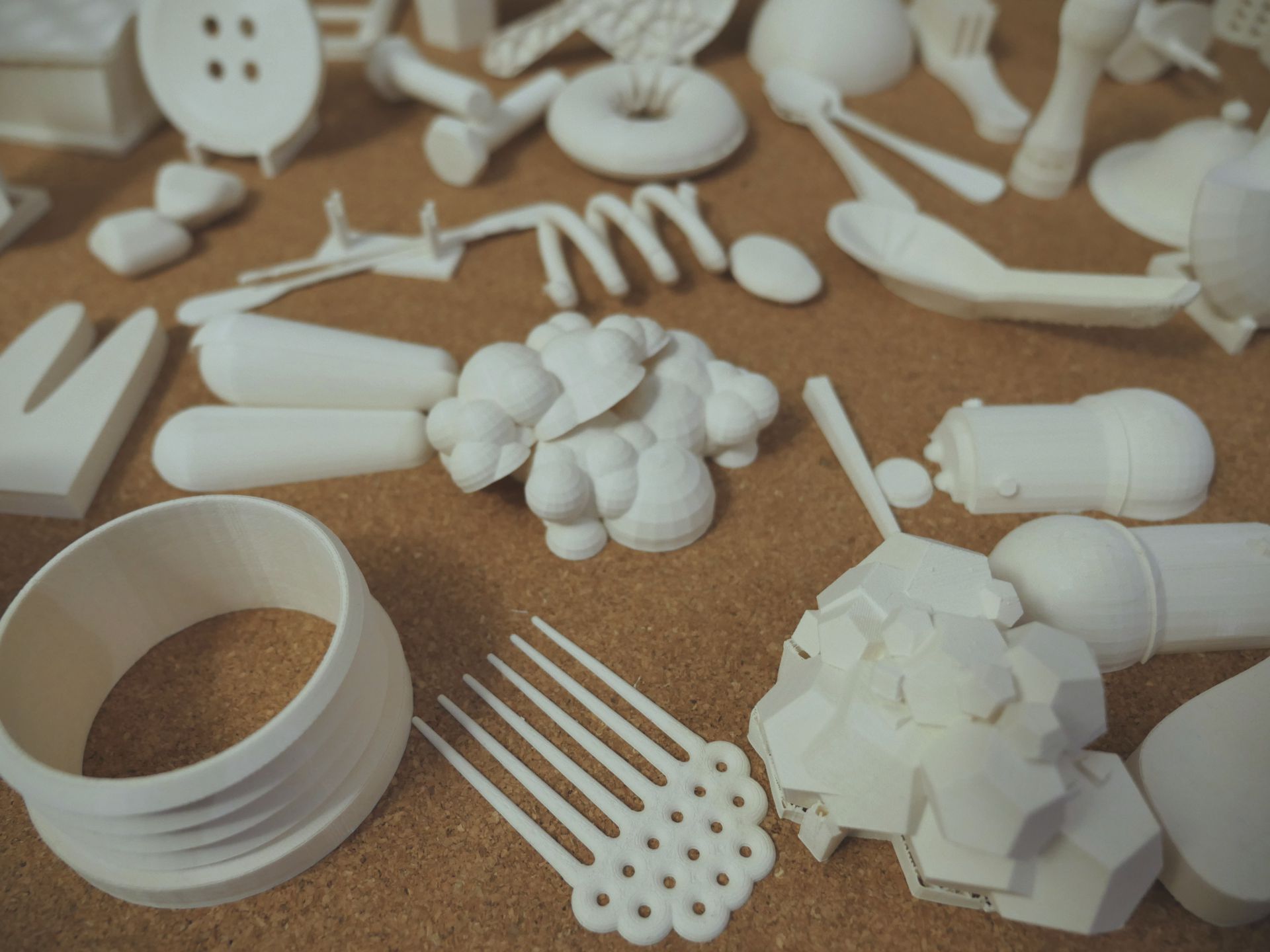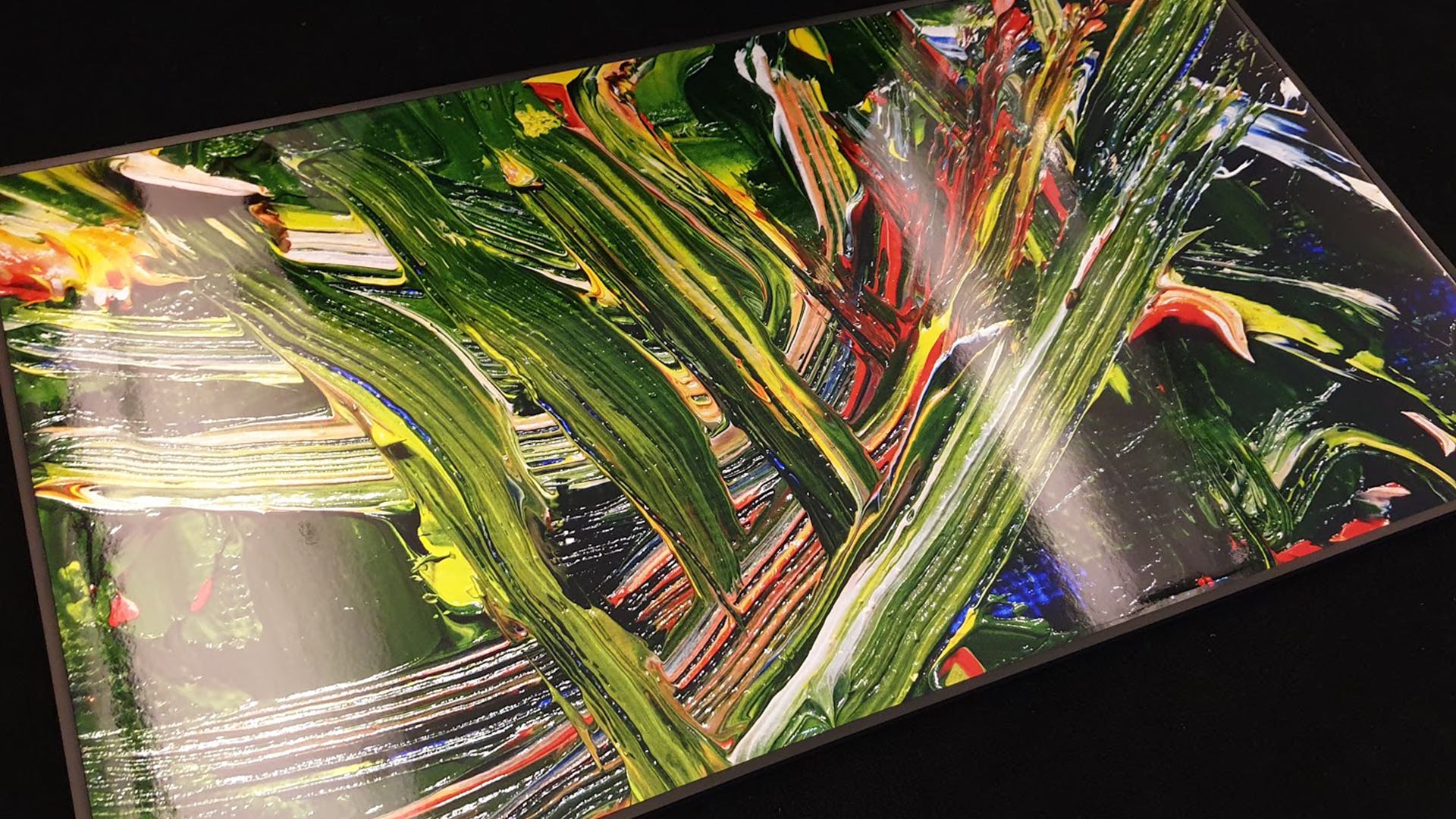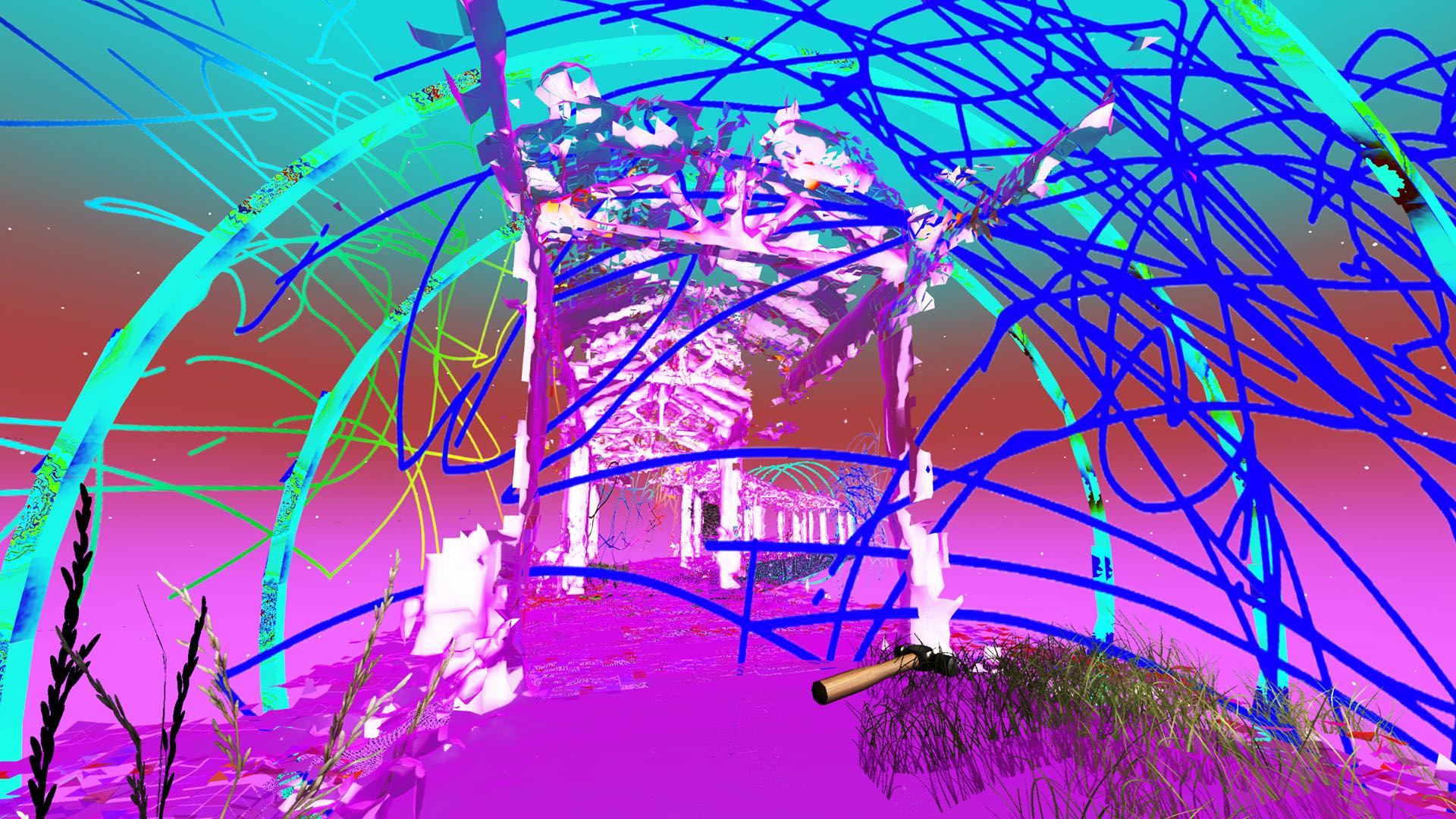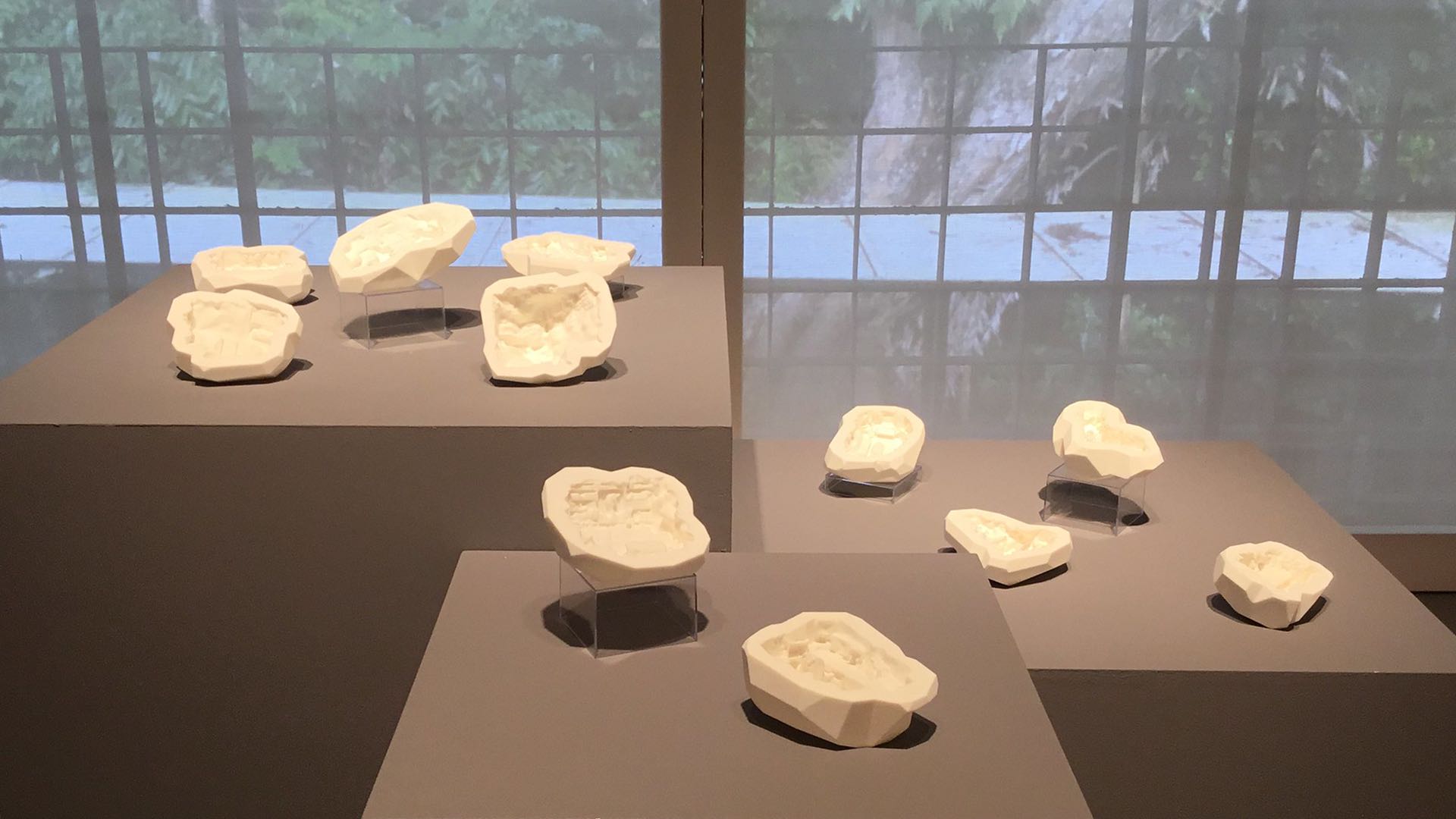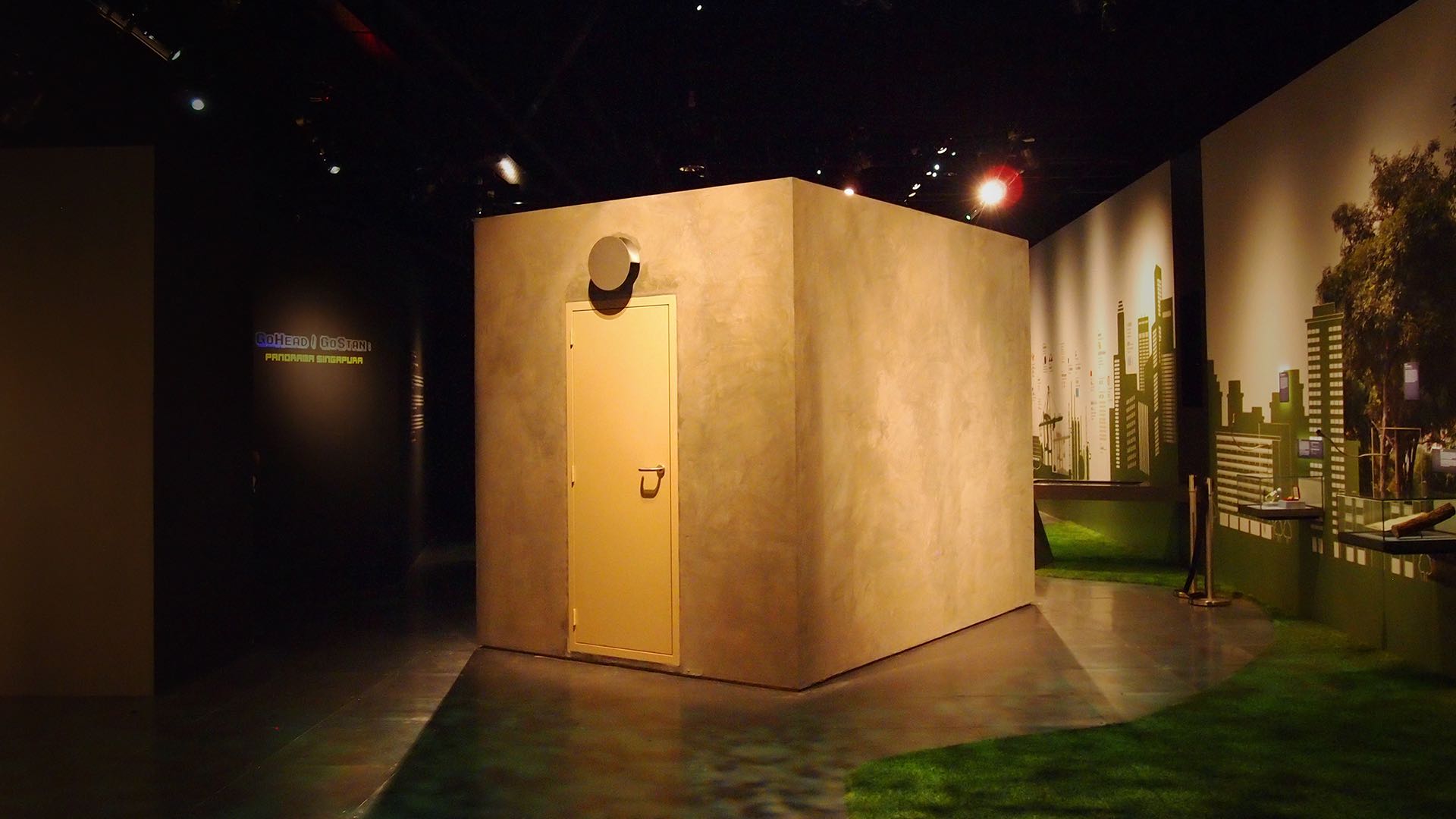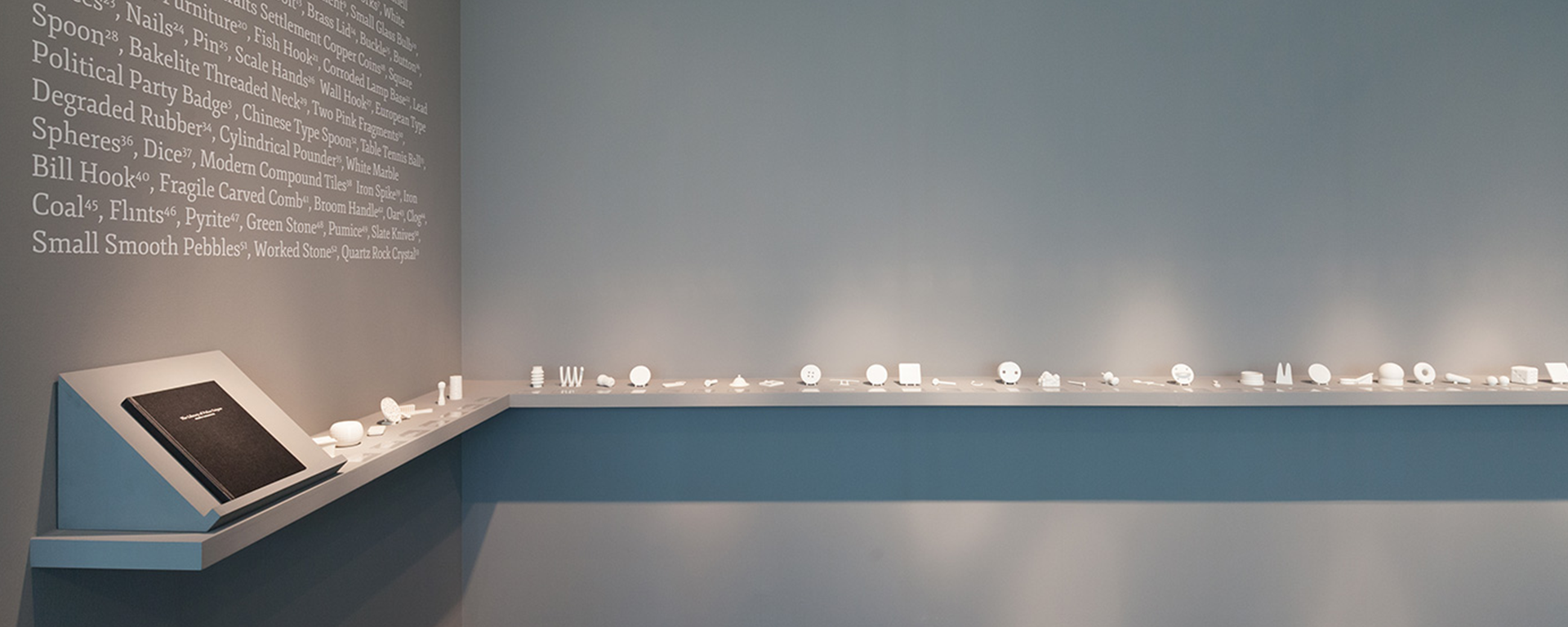
The Library of Pulau Saigon
For the last few years, I have been fascinated by Pulau Saigon – a former island in the Singapore River, which quietly became silted up and absorbed into the mainland and vanished from street maps after 1975. I became aware of it whilst doing research on the Singapore River, and soon came to realise that very few Singaporeans have heard of there having been an island in the river, even amongst those born early enough to remember the 1950s. Furthermore, there are scant few public records about Pulau Saigon in Singapore’s National Archives, although it was the former site of a railway station, an abattoir, and several warehouses.
In 1988, a rescue dig was conducted at this post-eighteenth century archaeological site. By that point the site had been disturbed so many times that the oldest items had been found on top rather than at the bottom. The artefacts recovered from this site contain a list of surprisingly mundane, mass-produced, everyday objects – speculated to have been litter from locals and passerbys. Today, we only know the name of these objects, but the objects themselves have become lost along the way.
A rescue dig was conducted at the site of Pulau Saigon, a former island in the Singapore River. The list of artefacts recovered from this post-eighteenth century archaeological site include mundane, mass-produced, everyday objects – speculated to have been litter from locals and passerbys.
An “un-forgetting” machine has been devised to reproduce these minor objects. Parametric models are generated using deep learning, shape recognition, 3D shape interpolation, and generative CAD modelling. The machine performs the creative and cognitive role of cultural craftsmanship on our behalf, producing a library of mutating cultural objects, exploring potentially infinite sets of variations within a fixed set of rules.
I want to try to “resurrect” these archaeological ambiguities – by producing objects from their names, as opposed to assigning names to objects. I began building a prototype for an “un-forgetting” machine, which produces objects from only their names. Each object is objectively designed to be the perfect sum average of all other objects bearing the same name. The parametric models are generated using deep learning, shape recognition, 3D shape interpolation, and generative CAD modelling.
The term “deep learning” refers to a set of machine learning algorithms which learn about human representations of data (eg: the names of the items in pictures) by modelling high-level abstractions. In its applications for image and shape recognition, it means an image is not to be recognised from the intensity of each of its various pixels (which is the format in which the computer stores an image), but an image is to be evaluated as a complex set of edges or regions of a particular shape.
The machine performs the creative and cognitive role of cultural craftsmanship on our behalf, producing a library of mutating cultural objects, exploring potentially infinite sets of variations within a fixed set of rules. These are to be “high-resolution” renderings of generalisations, which are low in detail by nature. The prototyping process is labour intensive. As the human operator, I spend a long time fine-tuning the generative scripts and 3d printer, in theory producing what could be potentially endless iterations. But in reality I can only produce a finite number of iterations based on the production deadline.
Generic objects which might have all looked same during mass-production, are now rendered differently each time using an automated process. The objects reveal themselves to be objects with multiple interpretations of their past and future forms. They are also embodiments of the uncertainty felt over the ambiguity of the mutual connections we might have with these ethnographic objects.
2015
53 3D Prints.
Archaeology Library, NUS Museum.
Collection of NUS MUseum.
